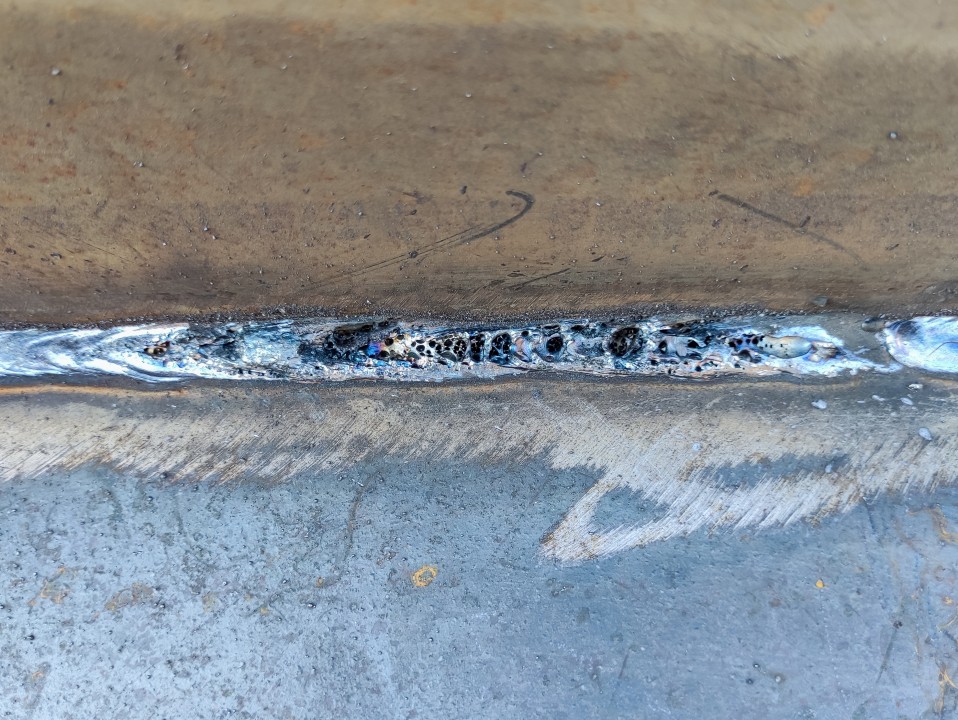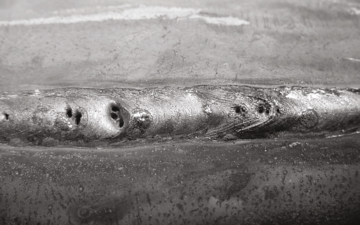Unraveling the Enigma of Porosity in Welding: Tips for Reducing Problems and Optimizing Quality
In the elaborate globe of welding, porosity remains a consistent challenge that can significantly affect the top quality and integrity of welded joints. Recognizing the factors that add to porosity development is critical in the search of perfect welds. By deciphering the enigma of porosity and applying reliable strategies for flaw minimization, welders can boost the criteria of their work to attain superior top quality results. As we dive into the depths of porosity in welding, revealing the tricks to its avoidance and control will be critical for specialists seeking to grasp the art of top notch weldments.
Recognizing Porosity in Welding
Porosity in welding, an usual problem experienced by welders, describes the existence of gas pockets or spaces in the bonded product, which can jeopardize the integrity and high quality of the weld. These gas pockets are generally caught during the welding process as a result of various aspects such as improper shielding gas, contaminated base products, or inaccurate welding parameters. The development of porosity can weaken the weld, making it vulnerable to splitting and deterioration, inevitably bring about architectural failures.
Understanding the origin of porosity is vital for welders to successfully stop its occurrence. By recognizing the significance of keeping proper gas protecting, ensuring the cleanliness of base products, and enhancing welding setups, welders can dramatically reduce the possibility of porosity development. Additionally, utilizing strategies like preheating the base material, utilizing correct welding techniques, and conducting detailed examinations post-welding can additionally aid in minimizing porosity issues. In general, a thorough understanding of porosity in welding is essential for welders to generate high-grade and sturdy welds.

Usual Sources Of Porosity
When evaluating welding processes for potential high quality concerns, understanding the usual root causes of porosity is important for maintaining weld honesty and preventing structural failings. Porosity, identified by the visibility of tooth cavities or gaps in the weld steel, can considerably jeopardize the mechanical residential or commercial properties of a welded joint. One usual root cause of porosity is improper securing gas protection. Inadequate protecting gas flow prices or improper gas blends can result in climatic contamination, causing porosity formation.
Furthermore, welding at inappropriate parameters, such as exceedingly high travel rates or currents, can produce excessive turbulence in the weld swimming pool, trapping gases and creating porosity. By addressing these usual causes through correct gas protecting, product prep work, and adherence to ideal welding criteria, welders can reduce porosity and enhance the top quality of their welds.
Methods for Porosity Prevention
Implementing efficient precautionary actions is vital in reducing the occurrence of porosity in welding procedures. One method for porosity prevention is making certain correct cleansing of the base metal before welding. Impurities such as oil, grease, rust, and paint can bring about porosity, so comprehensive cleaning using ideal solvents or mechanical approaches is important.

Using top quality filler read this post here products and securing gases that are ideal for the base metal and welding procedure can significantly lower the danger of porosity. Additionally, preserving proper welding specifications, such as voltage, current, take a trip rate, and gas flow rate, is vital for porosity avoidance.
In addition, utilizing appropriate welding strategies, such as preserving a consistent travel rate, electrode angle, and arc length, can aid stop porosity (What is Porosity). Appropriate training of welders to ensure they comply with ideal practices and quality assurance procedures is likewise crucial in minimizing porosity issues in welding

Finest Practices for Quality Welds
Ensuring adherence to industry requirements and appropriate weld joint prep work are basic aspects of attaining consistently top notch welds. Along with these foundational actions, there are a number of finest methods that welders can apply to further improve the top quality of their welds. One secret method is keeping appropriate tidiness in the welding area. Pollutants such as oil, oil, rust, and paint can negatively impact the quality of the weld, leading to issues. Thoroughly cleansing the workpiece and surrounding area before welding can assist alleviate these issues.
An additional finest method is to thoroughly select the appropriate welding specifications for the specific materials being signed up with. This consists of establishing the right voltage, present, take a trip speed, and protecting gas circulation price. Correct parameter option ensures optimal weld penetration, blend, and total top quality. In addition, utilizing top quality welding consumables, such as electrodes and filler steels, can substantially impact the last weld top quality. Purchasing costs consumables can result read the full info here in more powerful, more long lasting welds with less problems. By adhering to these finest methods, welders can consistently generate premium welds that fulfill market criteria and exceed client assumptions.
Value of Porosity Control
Porosity control plays a vital role in ensuring the honesty and top quality of welding joints. Porosity, identified by the visibility of dental caries or voids within the weld steel, can substantially endanger the mechanical residential or commercial properties and structural honesty of the weld. Too much porosity weakens the weld, making it a lot more at risk to fracturing, rust, and total failing under functional lots.
Effective porosity control is necessary for preserving the wanted mechanical properties, such as strength, ductility, and durability, of the bonded joint. What is Porosity. By minimizing porosity, welders can boost the overall quality and dependability of the weld, ensuring that it fulfills the performance demands of the desired application
Additionally, porosity control is essential for accomplishing the preferred aesthetic appearance of the weld. Too much porosity not just weakens the weld however also interferes with its visual appeal, which can be critical in industries where appearances are essential. Proper porosity control strategies, such as using the proper shielding gas, resource managing the welding parameters, and ensuring proper cleanliness of the base products, are crucial for creating premium welds with marginal problems.

Verdict
In conclusion, porosity in welding is a typical problem that can endanger the high quality of the weld. It is important to control porosity in welding to make sure the stability and strength of the last item.